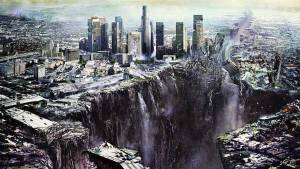Вход / Регистрация
22.12.2024, 23:06
Главная » 2015 Июнь 14 » World may see a bigger number of large quakes, says Singapore professor
14:57 World may see a bigger number of large quakes, says Singapore professor |
 Nature’s wrath struck in 2004, when a tsunami hit the coasts of several countries around the Indian Ocean. This marked the beginning of what geologists call an "active cycle”, where the Earth experiences greater seismic activity. Professor Kerry Sieh, director at the Earth Observatory of Singapore said: "The Earth goes through cycles of seismic energy release, and less release and more release. "We have definitely been in the active cycle in the last 11 years since 2004. "All the magnitude-8.4 earthquakes and bigger, up to 9.2, they all happened in the last 11 years. Several of those have been in Asia.” The previous active cycle was in the 1950s to mid-1960s, which saw several earthquakes with a magnitude of a high 8 and above 9. But for the next 40 years, there were no records of a quake with a magnitude above 8.3, until 2004. Since then, a string of devastating earthquakes has caused much destruction, like in Sumatra in 2005 and Fukushima, Japan, in 2011. "We don’t know whether we are at the end of the cycle or not,” said Professor Sieh. "My hunch is we will continue to see a larger number of large earthquakes. But that’s only a hunch because we don’t really have a way of telling whether we are at the end of the cycle or not.” In response to the recent Sabah quake, Professor Sieh supported the call by Malaysia’s Youth and Sports Minister Khairy Jamaluddin to relook safety protocols for climbers on Mount Kinabalu and also offered his team’s expertise. He said the incident came as a "big shock” to the country. "This changes everything, because previously we’ve never had an earthquake with an epicentre so close to the mountain. I believe we will ensure that future climbers will be safe when the new protocols are in place.Meteorologists and geologists will have to assess the impact of seismic movements in Sabah as part of efforts to relook safety aspects, the minister added.Asked about the idea of restricting Mount Kinabalu climbers to 15 and above, Khairy said: "Before we come to a conclusion about limiting the age of climbers, we have to understand what’s taken place and seismic threats that confront us. "Once that’s done and once we have the comprehensive review of the situation, then we are able to put in new security protocols which may or may not include an age limit to climbers in future.” Eighteen people were killed in the 5.9-magnitude earthquake early last Friday (June 5), among them mountain climbers and guides who were trapped on Mount Kinabalu, Malaysia’s tallest mountain and a tourist attraction. Of the 18, six are from Malaysia, nine from Singapore (mostly students), one from the Philippines, one from China and one from Japan. |
| Категория: Earthquake | Просмотров: 1397 | |
| Всего комментариев: 0 | |



